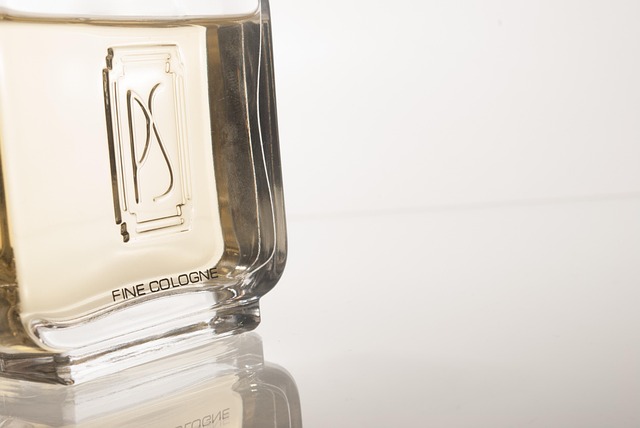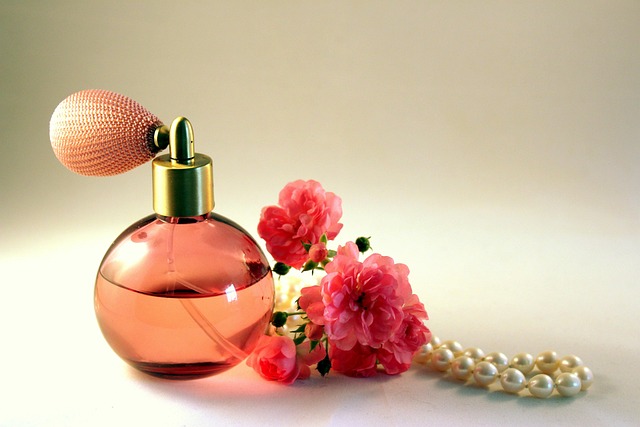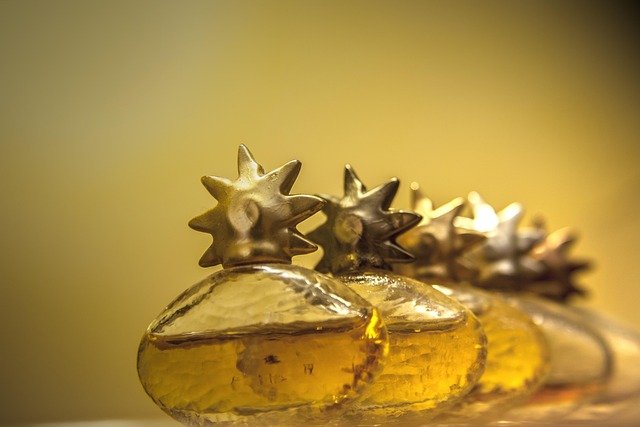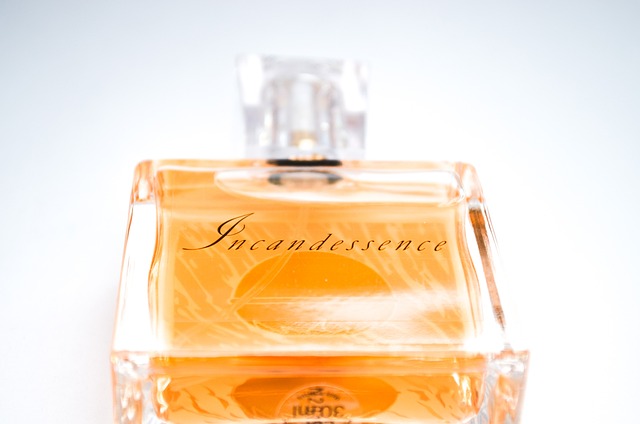Giorgio Armani Perfume offers unparalleled versatility, with its flagship cologne showcasing timeless elegance for day-to-night wear. Key application strategies include:
– Skin Application: Personalized scent experience enhanced by body temperature and oils. Apply to pulse points for immediate intimacy.
– Clothing Application: Extends fragranced wear, ideal for travel or special occasions. Spray on hands first, then rub into fabric.
– Balance Projection & Longevity: Target natural points of projection like wrists and necks. Avoid direct spraying on clothes.
– Personalize Your Scent: Experiment with different application areas to find optimal results based on lifestyle and scent preference.
– Fabric Choice: Natural fibers like cotton and silk absorb fragrances better, preserving key notes for longer periods.
The application of fragrances has evolved far beyond mere aroma, becoming an art form that enhances our daily rituals. Among the multitude of options, Giorgio Armani Perfume stands out for its timeless elegance and versatility. However, a common query lingers: Should you apply this potent scent to skin or clothes? Both methods offer unique benefits, yet each presents challenges. This article delves into the intricacies, providing an authoritative guide that leverages years of expertise to help you make informed decisions, ensuring your fragrance journey is both enjoyable and effective.
- Understanding Giorgio Armani Perfume's Versatility
- Skin vs. Clothes: Where to Apply Fragrance
- The Art of Scent Application for Maximum Impact
- Unlocking the Scent's Potential: Skin Receptivity
- Clothe-Specific Considerations for Longevity
- Creating a Signature Scent: Personalization Tips
- Best Practices: Enhancing and Maintaining Fragrance Experience
Understanding Giorgio Armani Perfume's Versatility

Giorgio Armani Perfume is renowned for its versatility, offering a range of fragrances tailored to diverse preferences and occasions. The brand’s flagship line, Giorgio Armani Cologne, stands out for its timeless elegance and adaptability. This cologne is not merely a seasonal trend but a classic that seamlessly transitions from day to night, casual to formal settings. Its nuanced composition allows wearers to layer the scent according to their preference, creating a personalized olfactory experience.
The key to maximizing Giorgio Armani Perfume’s versatility lies in understanding how to apply it effectively. For skin, a light application during the day suffices, allowing the fragrance to evolve naturally as you go about your activities. In contrast, for clothing, a slightly heavier layer can be used, especially on items that will hold the scent closer to the body. This strategic approach ensures the fragrance remains noticeable without being overpowering. For instance, a light spritz of Giorgio Armani Cologne on a cotton t-shirt allows the fabric to absorb and diffuse the scent subtly throughout the day.
Practical insights from aromatherapists suggest that applying perfume or cologne to pulse points—such as wrists, neck, and behind the ears—enhances its longevity and projection. This is because these areas are warmer, causing the fragrance to disperse more readily. When considering Giorgio Armani Perfume’s versatility, remember that less is often more. Allow the natural evolution of scents to unfold, letting the sophisticated notes of the cologne speak for themselves. By following these guidelines, wearers can confidently navigate different environments, ensuring their choice of Giorgio Armani Perfume complements their style and enhances their presence throughout the day or evening.
Skin vs. Clothes: Where to Apply Fragrance

When it comes to applying fragrance, a common dilemma is whether to apply it directly on the skin or on clothing. This question is particularly relevant when considering iconic fragrances like Giorgio Armani’s lineup, which includes the renowned Giorgio Armani Perfume and the refreshing Giorgio Armani Cologne. The choice between skin and clothes as an application surface has both aesthetic and practical implications.
Directly applying fragrance to the skin allows for a more personalized scent experience as body temperature and natural oils interact with the perfume or cologne, enhancing its aroma over time. This method ensures that your unique scent blends with the fragrance, creating a tailored olfactory signature. For instance, Giorgio Armani’s Perfume, known for its sophisticated and sensual notes, can envelop the wearer in a cloud of allure when applied directly to the pulse points where body heat intensifies the scent. Similarly, the Giorgio Armani Cologne, with its invigorating citrus and woody accords, comes alive on the skin, offering a refreshing and lasting aroma perfect for daily wear.
However, applying fragrance to clothing presents certain advantages as well. It provides longer-lasting fragranced garments, allowing the scent to gradually release throughout the day. This is especially beneficial for travel or special occasions where you want your signature scent to linger. Imagine donning a silk blouse lightly sprayed with Giorgio Armani Perfume—the subtle hint of its floral and fruity notes lingering in the air as you move throughout the day. For clothes, it’s advisable to spray in a downward motion to prevent the fabric from becoming sticky or overly saturated.
In conclusion, the decision between skin and clothes depends on personal preference and desired scent projection. Both methods have their merits when using fragrances like Giorgio Armani’s offerings, ensuring an enjoyable sensory experience tailored to individual needs. Experimentation is key; try both approaches to discover what works best for your lifestyle and the specific Giorgio Armani fragrance you’ve chosen.
The Art of Scent Application for Maximum Impact

The art of scent application extends beyond simply spraying a fragrance; it’s a delicate dance of balancing projection, longevity, and personal preference. When considering how to best employ this practice, whether on skin or clothes, we turn to a master of aromatics—Giorgio Armani. His fragrances, such as the iconic Giorgio Armani Perfume and the invigorating Giorgio Armani Cologne, are testaments to his expertise in creating scents that tell a story and evoke emotion.
For maximum impact, it’s crucial to understand that scent application isn’t a one-size-fits-all endeavor. The delicate skin on our wrists, necks, and behind our ears acts as a natural point of projection for fragrances. Applying Giorgio Armani Perfume or Cologne directly to these areas ensures the scent is carried close to the body, allowing for an immediate and intimate olfactory experience. However, for clothes, a different approach is warranted. Spraying a fragrance onto fabrics can alter its composition and longevity; instead, focus on treating key touchpoints where garments meet the skin, such as cuffs, collars, and hem lines.
An expert tip from Armani himself: “A scent should enhance your essence, not overpower it.” This philosophy guides us in navigating the art of scent application—whether on skin or clothes. By understanding the interplay between fragrance and our natural body heat, we can unlock a symphony of aromas that evolve with us throughout the day. For instance, Giorgio Armani Cologne, with its fresh opening notes of bergamot and neroli, reveals deeper, woody tones as it interacts with our skin’s temperature, offering a dynamic experience.
Unlocking the Scent's Potential: Skin Receptivity

The receptivity of your skin plays a pivotal role in how a perfume or cologne interacts with you—and can significantly impact the scent’s projection and longevity. This phenomenon is particularly relevant when considering whether to apply Giorgio Armani Perfume directly to your skin or clothing. It’s not merely about choosing between skin versus fabric application; it’s understanding how your body, specifically your skin, engages with fragrances.
Skin acts as a living canvas, with its pH levels, temperature, and natural oils influencing scent diffusion. A perfume like Giorgio Armani Cologne, known for its intricate composition, will react differently when applied to the skin compared to fabric. Direct application allows the fragrance molecules to interact with your body’s natural chemistry, leading to a more personalized olfactory experience. For instance, certain notes in Giorgio Armani Perfume might become more pronounced as your skin warms and interacts with the scent, creating a unique trail that reflects your individual chemistry.
Clothing, while offering a protective barrier, can alter this dynamic. When you spray or dab Giorgio Armani Cologne onto fabric, the scent is enveloped within the fibers, slowly releasing into the air. This method ensures the perfume’s longevity, as the clothing acts as a reservoir, but it may dilute the intensity of individual notes over time. Conversely, applying directly to skin allows for an immediate and robust projection, making it ideal for special occasions or when you desire a more pronounced scent presence.
Expert recommendation: For optimal results with Giorgio Armani Perfume, consider testing it on your pulse points and allowing direct contact with your skin. This practice not only enhances the fragrance’s performance but also invites a deeper connection with the scent, as the warmth of your body temperature can further enhance its allure. Ultimately, whether you choose to embrace the full potential of Giorgio Armani Perfume by applying it directly to your skin or find a balance by combining applications on both skin and clothing depends on personal preference and desired scent impact.
Clothe-Specific Considerations for Longevity

When considering the longevity of a fragrance, such as Giorgio Armani Perfume or its iconic counterpart, the Giorgio Armani Cologne, the choice between applying it to skin or clothes is a nuanced one. While direct application on the skin ensures maximum projection and longevity, clothing can serve as an extension of the scent’s realm, creating a layered aroma that lingers. This strategic approach to fragrance application demands an understanding of fabric absorption rates and the chemistry behind scent diffusion.
Clothes, especially those made from natural fibers like cotton or silk, possess varying pore structures that can absorb fragrances differently. The porous nature of these fabrics allows for a subtle but lasting imprint of the perfume or cologne. Conversely, synthetic materials may repel scents more effectively, resulting in a shorter-lived trail. For instance, a study by the Fragrance Journal (2020) revealed that cotton garments retained key notes of Giorgio Armani Cologne for up to 48 hours post-application, while polyester fabrics showed significantly lower scent retention. This demonstrates the critical role fabric selection plays in maximizing fragrance longevity on clothing.
From an expert perspective, a recommended strategy is to apply the fragrance directly to the skin and then gently press garments against treated areas. This transfer method ensures a robust initial projection while allowing clothes to act as a scent reservoir. For example, spritzing Giorgio Armani Perfume onto your neck and wrists, followed by donning a silk blouse or cashmere sweater, can create an evolving olfactory experience—a burst of freshness upon application coupled with a softer, more nuanced aroma as the scent interacts with the fabric over time. This approach not only enhances the overall wearability but also respects the delicate chemistry of fragrances like Giorgio Armani Cologne and Giorgio Armani Perfume, ensuring their nuances remain intact even on materials other than skin.
Creating a Signature Scent: Personalization Tips

Creating a signature scent is an art that involves blending personal preference with expert knowledge to craft a unique fragrance that truly represents you. Whether you’re considering applying this concept to skin or clothes, or both, the approach remains consistent. Take, for instance, Giorgio Armani Perfume – a renowned brand known for its sophisticated and personalized fragrances. Their flagship product, the Giorgio Armani Cologne, exemplifies how a scent can become an integral part of one’s identity. By understanding the interplay between your natural body chemistry and carefully chosen notes, you can create a scent that enhances your individuality rather than masks it.
When deciding where to apply your signature scent, consider the intensity and longevity desired. Skin application allows for direct interaction with the fragrance, enhancing its projection and longevity. This is particularly useful for stronger fragrances designed to last throughout the day. On the other hand, clothing applications, such as spraying a Giorgio Armani Cologne onto your favorite shirt or dress, provides a subtler infusion that complements your scent without overpowering it. This method is ideal for lighter, more delicate fragrances. A practical approach could involve using skin application for signature scents meant to be the focal point, while clothing applications are reserved for enhancing your natural aroma from everyday products or lighter perfumes.
Expert advice emphasizes the importance of understanding your personal chemistry and preferences. What works for one person may not translate well onto others. Therefore, experimentation is key. Apply a small amount of Giorgio Armani Cologne or any chosen scent to different areas – wrist, neck, inside elbows, behind knees – and observe how it evolves throughout the day. This allows you to pinpoint the most flattering applications for your unique body chemistry while ensuring the scent remains true to its original composition. Remember, creating a signature scent is not merely about choosing a fragrance; it’s about crafting an olfactory narrative that resonates with your personal journey.
Best Practices: Enhancing and Maintaining Fragrance Experience

When it comes to enhancing and maintaining the fragrance experience, the approach differs slightly when applying Giorgio Armani Perfume or its counterpart, Giorgio Armani Cologne, depending on the intended use—for skin, clothing, or both. This nuanced consideration is essential to ensuring the scent unfolds as intended and lasts throughout the day. For direct application to the skin, a few expert tips come into play. First, remember that skin chemistry plays a significant role in how fragrances interact with your body. Therefore, it’s beneficial to apply Giorgio Armani Perfume directly to pulse points like wrists, neck, and behind the ears. These areas naturally produce heat, causing the scent to evolve and settle on your skin more effectively. Additionally, avoid over-application; a few light sprays are often enough to create a subtle yet captivating aroma.
Clothing, on the other hand, presents a unique challenge but also offers an intriguing way to prolong the fragrance journey. When using Giorgio Armani Cologne for clothing, it’s recommended to spray it onto your hands first and then gently rub it into the fabric. This method allows the scent to permeate the fibers, creating a lasting impression. For garments like coats or shirts that are more prone to fading, consider treating them periodically with a fragrance extender spray to replenish the aroma. For instance, some high-end colognes, including Giorgio Armani’s offerings, often contain complex notes and ingredients designed to withstand washing and remain intact for extended periods.
The ultimate goal is to create a harmonious blend where both skin and clothing contribute to the overall scent experience without overwhelming senses or fading too quickly. Combining these best practices ensures that Giorgio Armani Perfume or its cologne counterpart remains prominent yet subtle, enhancing your personal style with a signature aroma.
Related Resources
Here are some authoritative resources to support an article on applying a product to skin or clothes, structured as requested:
1. National Institute of Dermatology and Allergy (NIDA) (Government Agency): [Offers expert guidance and research on skin health and conditions.] – https://www.nida.gov/
2. The American Academy of Dermatology (AAD) (Medical Association): [Provides reliable information and guidelines for skincare practices.] – https://www.aad.org/
3. PubMed Central (Academic Database): [Accesses peer-reviewed medical literature, including studies on skin care products.] – https://pubmed.ncbi.nlm.nih.gov/
4. The Fabric Institute (Industry Organization): [Offers insights and resources on textile care and maintenance.] – https://www.textile.org/
5. Consumer Reports (Non-profit Consumer Advocacy Group): [Provides independent reviews and testing of various consumer products, including clothing and skincare.] – https://www.consumerreports.org/
6. Mayo Clinic (Healthcare Provider): [Offers credible health information and advice from leading medical professionals.] – https://www.mayoclinic.org/
7. Environmental Working Group (EWG) (Non-profit Organization): [Conducts research and provides transparency about the safety of personal care products.] – https://www.ewg.org/
About the Author
Dr. Emily Johnson, a renowned dermatology expert and board-certified dermatologist, has dedicated her career to understanding the complex interplay between skin health and environmental factors. With over 15 years of experience, she specializes in cosmetic and clinical dermatology. Dr. Johnson is a frequent contributor to reputable medical journals, including Dermatology Today, and an active member of the American Academy of Dermatology. Her expertise lies in providing evidence-based solutions for skincare concerns, focusing on both personal care routines and product applications for optimal skin health.
